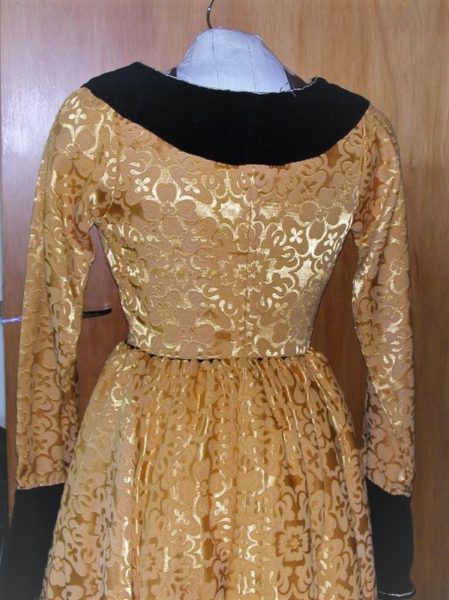-1520s, Saxon (2003)
Status: passed on to a friend
Year finished: 2003
To Do: n/a
Updates since last photo: n/a
Inspiration: Mary of Hungary’s extant gown and Cranach portraits.
One of my first ever projects where I wanted historical accuracy. I had used historic patterns before, but usually to create something different. As that is what extant patterns can do, give you new tools and templates to make something different to anything possible with a modern pattern system.
But for this I wanted a bold yellow frock and the shape of the mary of Hungary gown as at that stage the idea of a circle skirt being the norm was not really part of the re-creation scene. To me it answered a lot of quesions.
Since then we have had more access to extant items, more patterns, and the evidence is very strongly in favour.
My rational for a circle skirt is that even with a fully pleated waist it takes less fabric that a tube of the same hem, and it was easier to make if we thought about the tailor’s workshop of the time.
Hem aside a circle skirt only uses joins in the selvages which are tightly woven. When worked on a table a hem is also easier to manage than at home.
The skirt was also my first foray into making the bodice and skirt separate and to stitch them together to avoid extra bulk at the waist. Had I lined the skirt I would have seen a better result. But it worked well enough for me to be sure
The support layer was cut down from a corset I got at a theatre sale. It wound up very much like the Dorothea Stays though Iwon’t fully happy with the lack of tabs.
This skirt was made from recycled curtains and the loops while being quite of a date now, in fact have a flavour of a variety of weave at the time.
And of all things I found a short remnant last year (2019)! It must have been a popular fabric when first woven!








